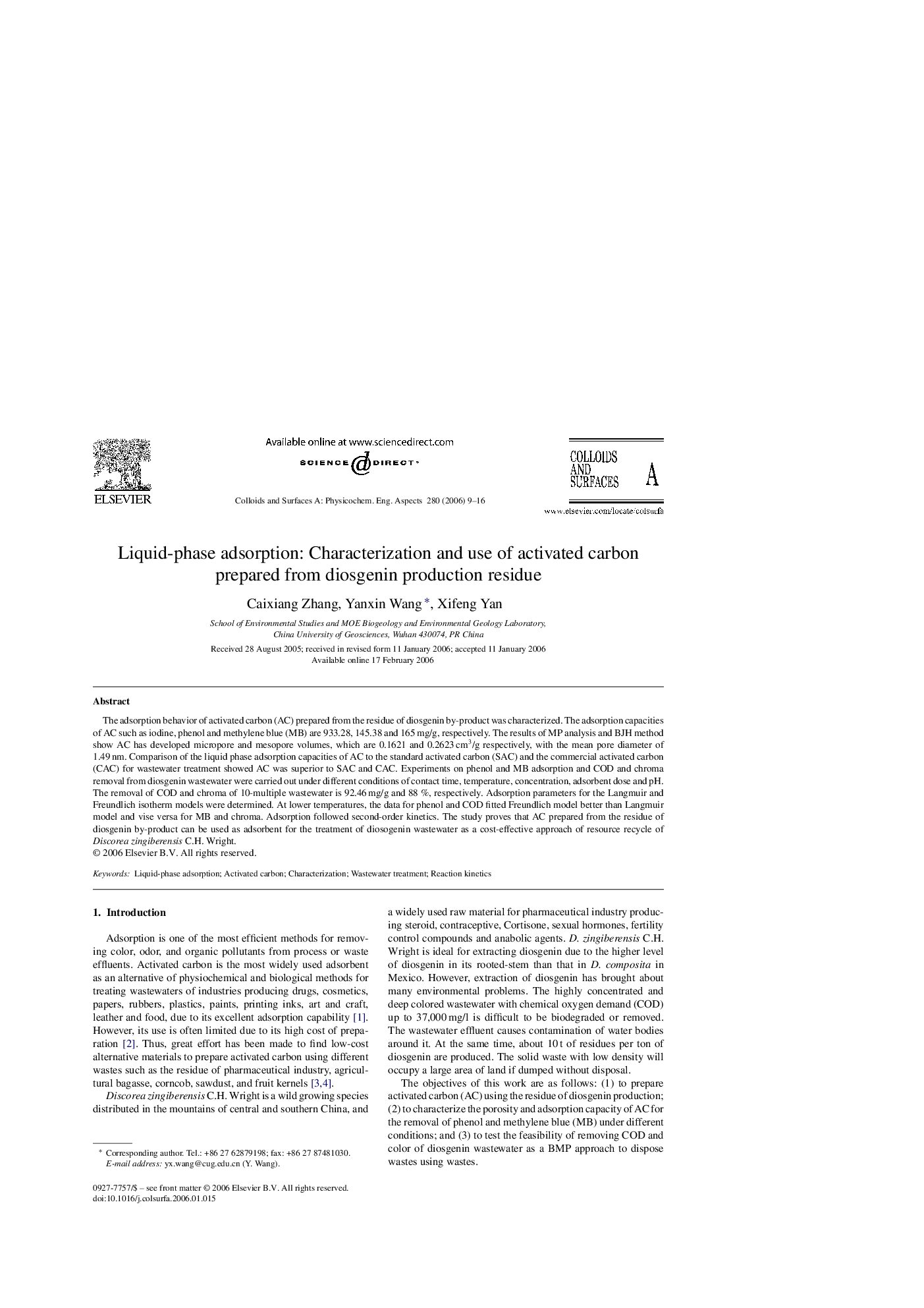| Article ID | Journal | Published Year | Pages | File Type |
|---|---|---|---|---|
| 598330 | Colloids and Surfaces A: Physicochemical and Engineering Aspects | 2006 | 8 Pages |
The adsorption behavior of activated carbon (AC) prepared from the residue of diosgenin by-product was characterized. The adsorption capacities of AC such as iodine, phenol and methylene blue (MB) are 933.28, 145.38 and 165 mg/g, respectively. The results of MP analysis and BJH method show AC has developed micropore and mesopore volumes, which are 0.1621 and 0.2623 cm3/g respectively, with the mean pore diameter of 1.49 nm. Comparison of the liquid phase adsorption capacities of AC to the standard activated carbon (SAC) and the commercial activated carbon (CAC) for wastewater treatment showed AC was superior to SAC and CAC. Experiments on phenol and MB adsorption and COD and chroma removal from diosgenin wastewater were carried out under different conditions of contact time, temperature, concentration, adsorbent dose and pH. The removal of COD and chroma of 10-multiple wastewater is 92.46 mg/g and 88 %, respectively. Adsorption parameters for the Langmuir and Freundlich isotherm models were determined. At lower temperatures, the data for phenol and COD fitted Freundlich model better than Langmuir model and vise versa for MB and chroma. Adsorption followed second-order kinetics. The study proves that AC prepared from the residue of diosgenin by-product can be used as adsorbent for the treatment of diosogenin wastewater as a cost-effective approach of resource recycle of Discorea zingiberensis C.H. Wright.
